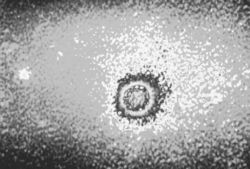In case you've miss placed your Chapter 18 Interactive Readers. Print them out from home or from the school library. To view and print click link below.
18.1 18.2 18.3 18.4 18.5 18.6
Battlefield Cell Video
18.1 18.2 18.3 18.4 18.5 18.6
Battlefield Cell Video
In case you missed some answers click here
How does this virus spread?
What classifies organisms as living?
Are viruses alive?
What makes up a virus?
How do viruses replicate?
What are some examples of viruses?
Viruses are not considered living because they do not meet these characteristics...but once in a host they hijack its machinery to create more of the virus.
Many viruses have a similar composition of protein and nucelic acid. (some have a lipid coat)
A viruses can replicate using 2 cycle processes:
Lytic Cycle where the cell bursts, killing the host cell.
Lysogenic Cycle where the viral DNA is integrated into the host DNA. External factors (stress conditions) may trigger the virus into going into the Lytic Cycle.
What are some examples of viruses?
Ebola: fatality rate of up to 90%, the Ebola Virus Disease (also called Ebola Hemorrhagic Fever) is believed to be one of the deadliest virus infection all over the world.
Rabies Virus: causes 55,000 human deaths each year, if left untreated 100% fatality rate.
Smallpox Virus: very few deaths due to a
vaccine but if patients contract the virus
90% fatality rate .
Chickenpox Virus: (varicella) used to be very common in the United States before the chickenpox vaccine became available in 1995. In the early 1990s, an average of 4 million people got chickenpox, 10,500 to 13,000 were hospitalized (range, 8,000 to 18,000), and 100 to 150 died each year.
HIV: this virus has claimed the lives of millions. In many cases if no treatment/medication 100% fatality.
SARS: Severe Acute Respiratory Syndrome
about 10% fatality rate.
about 10% fatality rate.
Viroids: nucleic acid molecule that infects
plants
Prions: protein molecule that infects the
hosts neurological system
Mad Cow Disease
Zika virus
Are you controlled by viruses
plants
Prions: protein molecule that infects the
hosts neurological system
Mad Cow Disease
Zika virus
Are you controlled by viruses



















